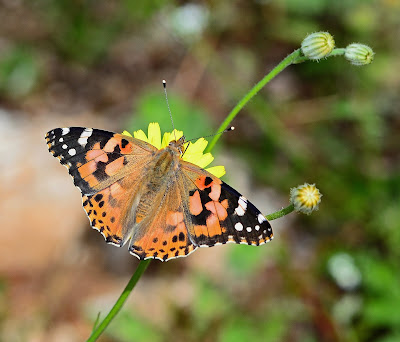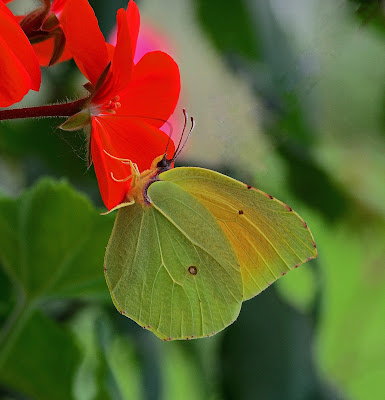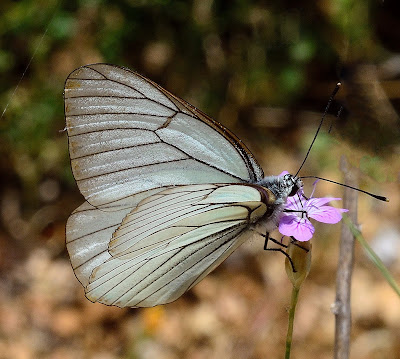In fact, butterflies encountered within a short distance of our accommodation within a stones throw of the clifftop village of Spartachori.The Island of Meganisi is situated close to Lefkada in the Ionian Islands off the west coast of mainland Greece.The surrounding landscape is one of massive limestone boulders incorporated into small 'paddocks' where there are stone walls and olive trees.The very rural conditions are supplemented by goats,chickens, and the odd cow.Butterflies are numerous and can be observed flying through the rock strewn groves and along the narrow country lanes and tracks.
The village of Spartachori is perched on a cliff overlooking the bay of Spilia.It is a very traditional and pretty village with narrow streets and picturesque houses.It is also an excellent place to see butterflies.They are attracted to the colourful flowers that cascade from the walls and buildings.The Southern Comma pictured below was seen basking in the warm on a paved street.
Other butterflies recorded in and out of the village were Eastern Dappled White,Painted Lady,Southern White Admiral,Cleopatra,Southern Swallowtail,Clouded Yellow,Scarce Swallowtail,Two-tailed Pasha,Geranium Bronze,Lulworth Skipper,Brown Argus,Wall , and a Large Tortoiseshell observed outside our villa and settling just long enough to be identified before flying on up the lane.
The village of Spartachori is perched on a cliff overlooking the bay of Spilia.It is a very traditional and pretty village with narrow streets and picturesque houses.It is also an excellent place to see butterflies.They are attracted to the colourful flowers that cascade from the walls and buildings.The Southern Comma pictured below was seen basking in the warm on a paved street.
Other butterflies recorded in and out of the village were Eastern Dappled White,Painted Lady,Southern White Admiral,Cleopatra,Southern Swallowtail,Clouded Yellow,Scarce Swallowtail,Two-tailed Pasha,Geranium Bronze,Lulworth Skipper,Brown Argus,Wall , and a Large Tortoiseshell observed outside our villa and settling just long enough to be identified before flying on up the lane.































